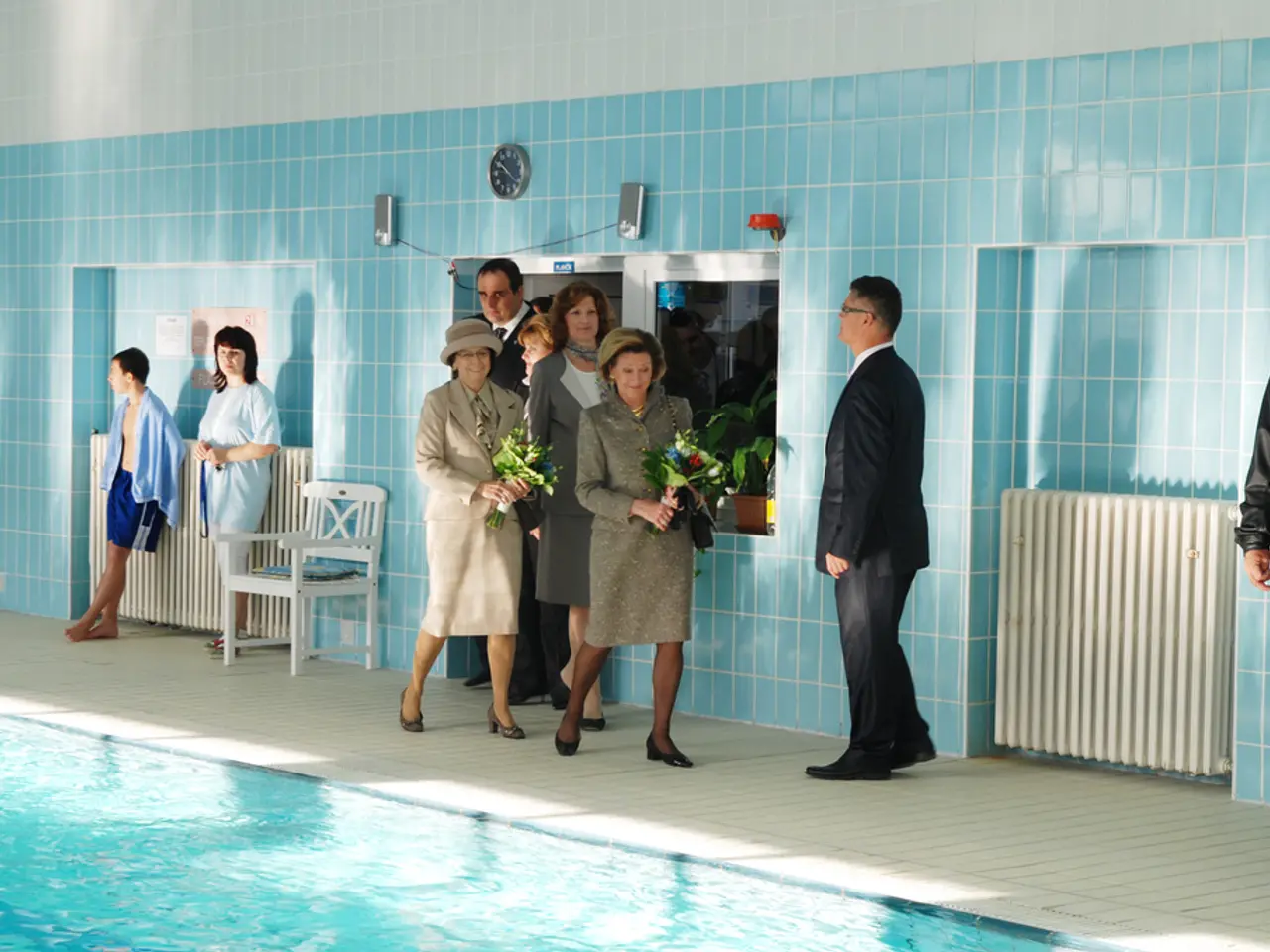Potential wave of an American-Australian swimming pool trend spreading towards UK's backyards?
In recent years, shipping container swimming pools have emerged as a trendy and unconventional alternative to traditional pools. They offer a mix of benefits and drawbacks worth considering for homeowners seeking a stylish and functional garden trend.
### Benefits
One of the primary advantages of shipping container pools is their cost-effectiveness. Due to the pre-structured shell of the container, construction time and materials are reduced, making them often more affordable than traditional inground pools[1][5].
The structural strength and durability of shipping containers are another significant advantage. Designed to withstand ocean transport, they provide a strong, long-lasting structure for a pool[2].
Another benefit is faster installation. Since the container is prefabricated, installation is quicker than conventional pools, sometimes allowing for use soon after delivery[1][3].
In terms of eco-friendliness, repurposing containers reduces the need for new construction materials and limits construction waste, supporting sustainability efforts[4].
Shipping container pools are also space-saving and relatively portable. Their rectangular shape can fit into smaller yards where traditional pools might be impractical, and they can be moved or relocated more easily than inground pools[3].
### Drawbacks
However, shipping container pools have limitations. The rectangular, boxy shape restricts creative pool designs, and you’re mostly limited to the container’s dimensions. Customization beyond this can become costly, sometimes negating initial savings[1].
Another drawback is the limited depth. Shipping container pools usually have a shallow depth, making them unsuitable for diving or certain swimming activities[1].
Despite manufacturers applying rust protection, concerns remain about corrosion over time, particularly in saltwater pools, which require consistent maintenance to prolong lifespan[1].
The industrial look of a shipping container pool may not suit all garden styles and could be less visually appealing to some. Also, depending on placement, access in and out could be less convenient[1].
Cost escalation with customization is another potential issue. Adding bespoke features can increase costs substantially, possibly reaching or exceeding those of traditional pools[1].
### Comparison with Traditional Pools
| Aspect | Shipping Container Pool | Traditional Pool | |--------------------|---------------------------------------------|--------------------------------------| | Cost | Generally lower upfront, but can rise with customizations[1][5] | Higher upfront installation costs[3] | | Installation Time | Faster, from delivery to use in days/weeks[1][3] | Longer, weeks to months[3] | | Design Flexibility | Limited to container shape; rectangular[1] | Customizable sizes and depths[3] | | Durability | Strong steel shell; potential rust risk[1][2] | Varies by material; generally durable | | Depth | Limited; not suitable for diving[1] | Can be customized for depth needs[3] | | Aesthetics | Industrial look; may not suit all gardens[1] | Widely varied design options | | Maintenance | Requires rust protection and upkeep[1] | Standard pool maintenance |
### Conclusion
Shipping container swimming pools represent a cost-effective, durable, and eco-friendly option with fast installation, best suited for homeowners looking for a simple, modern pool solution without extensive customization. However, they offer limited design flexibility, a shallower depth, potential rust concerns, and an industrial aesthetic that may not fit every setting[1][2][5].
As shipping container pools become more popular in the UK, companies such as Cubepools, Cabin Depot, Doodle Build, and shopping sites such as Amazon offer various options for potential buyers. With careful consideration of the benefits and drawbacks, homeowners can make an informed decision about whether a shipping container pool is the right choice for their garden.
- The costs of shipping container pools are often lower than traditional inground pools due to reduced construction time and materials.
- Shipping containers, designed for ocean transport, provide a strong, long-lasting structure for a pool.
- Installation of shipping container pools is faster than conventional pools, sometimes allowing for use soon after delivery.
- Repurposing shipping containers reduces the need for new construction materials and supports sustainability efforts.
- The space-saving and relative portability of shipping container pools makes them ideal for smaller yards and enables easier relocation compared to inground pools.
- The rectangular shape of shipping container pools can restrict creative designs and limit customization beyond the container's dimensions.
- Customization of shipping container pools can become costly, potentially negating initial savings and even reaching or exceeding traditional pool costs.
- Shipping container pools have a shallower depth, making them unsuitable for diving or certain swimming activities.
- While manufacturers apply rust protection, concerns remain about corrosion over time, particularly in saltwater pools.
- The industrial look of shipping container pools may not suit all garden styles and could be less visually appealing.
- Access in and out of a shipping container pool could be less convenient, depending on its placement, and may not cater to various lifestyle or fashion preferences associated with home and garden, environmental science, energy efficiency, lifestyle, technology, or even fashion-and-beauty trends.




